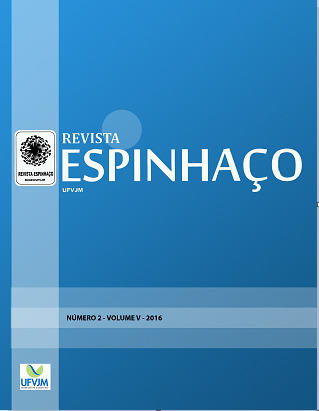Chemical, mineralogical and physical characteristics of a material accumulated on the river margin from mud flowing from the collapse of the iron ore tailings dam in Bento Rodrigues, Minas Gerais, Brazil
DOI:
https://doi.org/10.5281/zenodo.3957942Keywords:
Heavy metals, contamination, recovery of degraded areas, agricultural areasAbstract
The rupture of an itabirito mining tailings dam at the headwaters of the Doce River Basin (Minas Gerais and Espírito Santo, Brazil) caused the greatest environmental catastrophe of the planet Earth related to this activity. The tailings were deposited both in the bottom and on the riverside terrace of the rivers, causing silting and deep changes in the water quality and burial of the main agricultural areas of this basin. For these areas to return to pre-disaster levels, it is imperative that the material deposited on the river terraces be thoroughly characterized. The objective of this work was to characterize the material from the rupture of the Fundão dam, deposited on the river terrace of the Carmo River, a tributary of the Doce River. The material was collected at a depth of 0 to 30 cm from a tail layer about 3 meters thick deposited on the river terrace on the right bank of the Carmo River in the urban area of Barra Longa, Minas Gerais. The physical analyses included soil, particle and porosity density, chemical analyses were pH, sorption complex, organic matter, exchangeable Fe, Mn, Cu, Zn, Pb, Cd and Ni, total oxides, and mineralogical analyses were performed by X-ray diffractometer and Mössbauer spectrometry. The reject has high levels of sand and silt and a low clay content. The densities of soil and particles are high, and the porosity is low. The pH is alkaline, the levels of organic matter, plant nutrients and CEC are very low. The exchangeable heavy metals Zn, Cd, Cu, Pb and Ni are very low, and the exchangeable Mn contents of the tailings are high. The predominant total oxides of the tailings are SiO2 and Fe2O3. The most abundant minerals of the tailings are quartz and hematite. The physical, chemical, and mineralogical attributes of mine tailings restrict the restoration of native vegetation or the agricultural use of the river terraces on which it was deposited.
References
BRANDT MEIO AMBIENTE. 2005. Estudo de Impacto Ambiental (EIA). Barragem de Rejeito do Fundão. Nova Lima. BreemenNV.; Buurman P. 2002. Soil Formation. 2ª ed. Dordrecht: Kluwer.
Comissão de Fertilidade do Solo do Estado de Minas Gerais. 1999. Recomendações para o uso de corretivos e fertilizantes em Minas Gerais - 5ª Aproximação. Ribeiro, A. C.; Guimarães, PTG.; Alvarez, VH. Editores. .
Empresa Brasileira de Pesquisa Agropecuária. 2011.Manual de métodos de análise de solo. 2 ed. Rio de Janeiro: Embrapa Solos.
Empresa Brasileira de Pesquisa Agropecuária (Ed.). 2013. Sistema Brasileiro de Classificação de Solos. Rio de Janeiro: Centro Nacional de Pesquisa de Solos.
Fabris, JD.; Viana, JHM.; Schaefer, CEGR.; Wypych, F.; Stucki, JW. 2009. Métodos Físicos de Análises em Mineralogia do Solo. In: Melo, V.F.; Alleoni, L.R.F. (Org.). Química e Mineralogia do Solo. Parte I - Conceitos Básicos. Viçosa-MG: Sociedade Brasileira de Ciência do Solo.
Milanez, B; Losekann, C. 2016. Desastre no Vale do Rio Doce: antecedentes, impactos e ações sobre a destruição. Rio de Janeiro: Folio Digital: Letra e Imagem.
Schafer, CEGR.; Correa, GR.; Pereira, A.; Nunes, JA.; Souza, OFF.; Marins, A.; Fernandes Filho, E.; Ker, JC. 2015.Solos desenvolvidos sobre canga ferruginosa no Brasil: uma revisão crítica e papel ecológico dos formigueiros. In: Geossistemas Ferruginosos do Brasil (org. Carmo, F. F.; Kamino, Y., Ed. Int Pristino).
Schafer, CEGR.; Santos, EE.; Fernandes Filho, EI.; Assis, IR. 2016. Paisagens de lama: os tecnossolos para recuperação ambiental de áreas afetadas pelo desastre da barragem ambiental, em Mariana. Boletim Informativo da SBCS, 42(1):18-23.
Theisen A.A.: Harward M.E. 1962. A paste method for preparation of slides for clay mineral identification by x-ray diffraction. Soil Sci Soc Am Proc. 26:90-1.
Viana, JHM.; Costa, AM. 2016. A Ciência do Solo como instrumento para a recuperação das áreas afetadas pelo desastre de Mariana e dos solos na Bacia do Rio Doce. Boletim Informativo da SBCS, 42(1):24-27.
Downloads
Published
How to Cite
Issue
Section
License
Copyright (c) 2022 Revista Espinhaço

This work is licensed under a Creative Commons Attribution-NonCommercial-NoDerivatives 4.0 International License.


